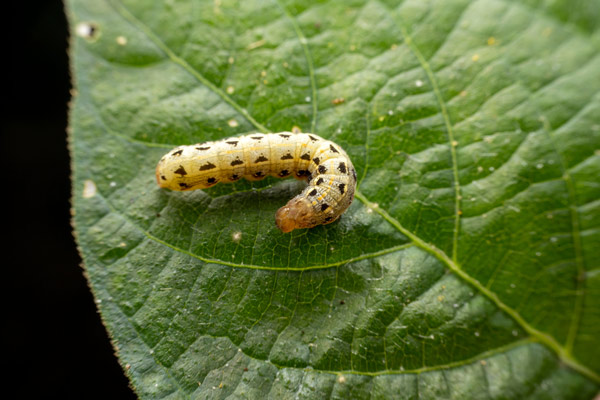
The tobacco cutworm, a notorious pest across Asia and Oceania, may hold the key to revolutionizing nanomaterials production. This surprising discovery by chemists at RIKEN suggests that the powerful enzymes in these larvae’s guts could be harnessed to create new chemical synthesis methods. The research, led by Kenichiro Itami, opens up intriguing possibilities for the future of material science.
RIKEN chemists have found that by feeding carbon nanobelts to tobacco cutworms, they can process the resulting droppings to yield novel nanomaterials. This unconventional approach could pave the way for innovative chemical synthesis techniques, challenging traditional methods that rely heavily on high-purity chemicals and controlled laboratory environments.
Innovative Approach to Chemical Synthesis
Kenichiro Itami, a chemist specializing in carbon nanobelts, never imagined that caterpillar droppings would become a focal point of his research. The team at the RIKEN Molecule Creation Laboratory is exploring the building blocks of carbon nanotubes, which are renowned for their strength and electrical conductivity. Traditionally, these components are synthesized in pristine labs, but Itami’s team decided to think outside the box.
Inspired by discussions on xenobiotic metabolism, Itami proposed an outlandish idea: could insects synthesize chemicals? Xenobiotic metabolism involves organisms modifying foreign chemicals to make them more water-soluble for excretion. “For organic chemists like us, using insects for chemical synthesis was an unbelievably crazy idea,” Itami admits.
From Failure to Success
The initial experiments, however, were disappointing. Silkworms fed a diet laced with carbon nano-rings did not survive, as the rings proved toxic. The team then turned to the hardier tobacco cutworm, known for its voracious appetite and abundance of detoxifying enzymes. This decision proved pivotal.
After two days, the researchers collected the caterpillar droppings and were astonished to find that the larvae had inserted an oxygen atom into many of the carbon nanobelts. This reaction, involving the breaking of stable carbon-carbon bonds, is typically energy-intensive and challenging to achieve in a lab setting.
“That was totally unexpected,” Itami recalls. “When we saw this result, we were like ‘wow!’ and the lab was full of excitement.”
Implications and Future Prospects
Although the oxygen-containing carbon nanobelts currently lack known industrial applications, the experiment underscores the potential of insects as tools for chemical synthesis. “We’ve demonstrated the potential of ‘in-insect’ synthesis for producing entirely new molecules,” Itami says.
The tobacco cutworms exceeded expectations, producing the compound in higher quantities than anticipated. Initial yields were about 1%, but with optimized feeding and purification, they approached 10%. Itami believes these yields could be improved further.
Interestingly, the team’s success hinged on serendipity. They discovered the reaction using carbon nanorings made of six benzene rings. Attempts with other ring sizes yielded no reaction, highlighting the selective nature of enzyme activity.
Expanding the Horizon
The researchers are now exploring the use of different insects for chemical synthesis. “Other researchers become extremely excited when I present this work at conferences, and tend to ask ‘what about using cockroaches or grasshoppers?’,” Itami notes. This line of inquiry could lead to even more groundbreaking discoveries.
For Itami, the most rewarding aspect of the research is transforming a pest into a scientific ally. “Tobacco cutworms are a serious pest that everybody wants to eliminate,” he says. “But while they are the bad guys for others, they became the heroes in our study.”
This development represents a significant step forward in the field of chemical synthesis, with potential implications for industries reliant on nanomaterials. As research continues, the scientific community eagerly awaits further breakthroughs from this innovative approach.







